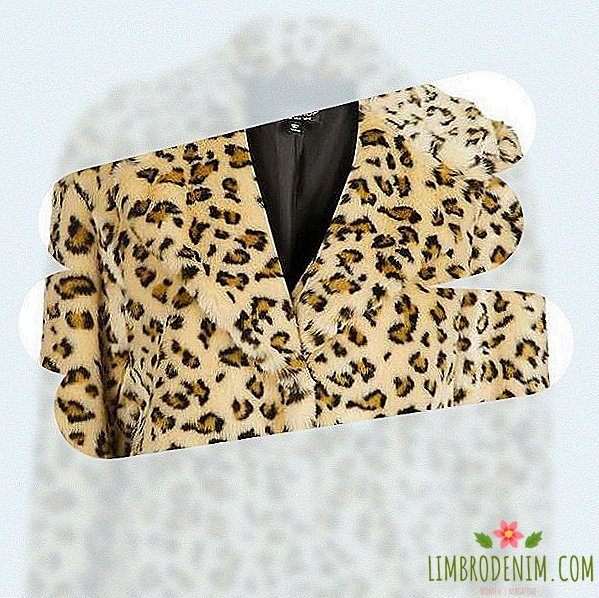Dirty Sneakers: Why Brands Won by Non-Marketers
Men's fashion weeks always pass before haute couture shows., and the spring-summer shows of the next year have just ended. On Saturday, for example, Vetements made a presentation of their no show - they replaced the show with a photo exhibition, for which ordinary people posed for a parking lot. Two weeks earlier, the St. Petersburg show was held by Gosha Rubchinsky, who made a rave like in the nineties and came up with a collaboration with Burberry, an important brand for football fans. And before them was still a Gucci cruise, on which models strewn with pearls and crystals walked around the Florentine palazzo.

This is not a retelling of events in the spirit of "The Volga flows into the Caspian Sea." Vetements, Gucci and Gosha Rubchinskiy are undoubtedly the most important brands now in terms of their degree of influence. After the arrival of Alessandro Michele, Gucci beats all sales records, and his signature overstyling was not copied unless a very lazy designer. Demna Gvasalia from Vetements and Rubchinsky are two key figures of the “Russian mafia” who appeared from somewhere out of the darkness and lack of money in the post-Soviet space (in fact, not really) and seriously crushed the industry under them. That is, these are three stamps, at one and the same moment absolutely equally influential, but one has Baroque lace and cuffs with brooches, while the others have deliberately ugly windbreakers mixed with tarpaulins of tarpaulin. Why is that?
The question would have been absolutely meaningless twenty years ago, when at the same moment Alexander McQueen, Martin Margela, John Galliano and, for example, Youji Yamamoto, managed to coexist - and all were also very influential. In general, it is normal when people simultaneously do diametrically opposed things: someone has feathers in a silk bodice, someone has a plastic bag T-shirt, almost found near the venue of the show. But the difference between "then" and "now" is huge.
As long as cutting-edge fashion magazines understand the nature of the sudden popularity of "ugly fashion", three brands simply make such clothes - and with phenomenal success.
In the eighties, nineties and early zero, the fashion industry experienced a creative upswing, and it is logical that everyone walked on their heads in their own way. Now it is a colossal industry where marketing teams run the big brands. Endless audience studies are conducted, agencies sell designers folders with trends that are just emerging, and indeed the whole world is busy endlessly predicting the future, where not even millennials, but even younger people and the answer to the question “What do they really want?” " It seems to all the key. And the fact that Vetements, Gucci and Gosha Rubchinskiy coexist in this sterile, along and across the drawn-up and measured space, already becomes interesting.
These three brands seem to have understood life. They are young, fresh and new (yes, even Gucci, which after Michele literally reborn). They arrange all sorts of strange things that are unthinkable for brands with an adult audience - remember the pop-up story of the Official Fake fakes, which Vetements opened, or the Gucci memes, which the brand did instead of the next advertising campaign. They speak the same language as the mysterious "youth" about which the trend reporting agencies write research similar to the reports of a meeting with an alien civilization.
While cutting-edge fashion magazines understand the nature of the sudden popularity of "ugly fashion", these three brands simply make such clothes - and with phenomenal success: Vetements and Rubchinsky have become iconic for people with high incomes and for VKontakte conditional students; all of Asia goes to Gucci, and there are so many fakes for each of the three brands on some AliExpress that you immediately recall the saying about imitation as the highest form of flattery.
The question automatically arises: why do we need well-coordinated marketers, professional trend hunters and other important people, if in the end buyers still want completely different things that cannot be brought to any common denominator? Yes, even Gucci and Vetements have common marketing points - so, for example, Michele and Gvasalia appear, for example, pseudo-dirty sneakers. Only it does not change anything. At Gucci, these sneakers are bundled with a velvet caftan, and Demna reminds us of the scarce shoes that were worn in the USSR until it collapsed. But can this thin line be read by the audience? Of course not.
Even Business of Fashion, a serious edition for pros, for some reason begins to recall Russian ballet when he writes about Rubchinsky and Gvasalia - not about the sleeping areas and football fans who really inspired these designers, but about Russia, which we lost. And an expert from Vogue.com believes that dirty shoes became a symbol of political neutrality in 2017. All this becomes very absurd and as close as possible to the Rorschach test: as I see, I treat it so. In the same way, all the marketing researches defining the trends of the future are built - therefore there are so many tendencies, that is why they are so different, therefore, if you follow them closely, your head can ache.
It’s getting boring even to the brands themselves to bring everything into tables and target collections to a certain abstract youth.
The joke is that, whatever these marks of the intersection of the brands, no matter how conscientiously the trend hunters work, the answer to the question "What do young people want?" not. Attempting to find it is a simplification and a flattening, which are always fraught with a loss of substance. People at the same time wear dirty sneakers, lace jabot and silk jackboots; regardless of gender, they may wear dresses — or, conversely, share views of classical masculinity and femininity; they can like the hoodie Zemfira for almost a thousand euros, which the Georgian designer made for the French brand, because they see Zemfira himself in it, the ghost of Russian ballet - or they don’t see anything at all and they just like it, sorry, the jacket.
It seems, it’s getting boring even to the brands themselves to bring everything into tables and target collections for some abstract youth. Take at least the last week of men's fashion, with which we started, and the global trend for the image of “cool daddy” - from Balenciaga (the brand is still the same Demna) at the show did not go models, but ordinary middle-aged men in sandals with high socks and dressed in jeans striped shirts. Of course, it will amuse young clients and remind them of the image of a father from childhood, but there is another point: with such a scenario, it is easier for adult clients to associate themselves with their peers.
As a result, all segments of the audience are covered, any clothing becomes popular - from the very striped shirts to the trendy jeans jackets packed in plastic. The fact that even the most commercial and advanced part of the fashion industry is still a hodgepodge says that it is interesting to classify a buyer by age, generation and other dates in a passport, but why? It may be better to move a little away from the statistical tables and data folders and take up clothes again.
Photo: KM20, Burberry Gosha Rubchinskiy





